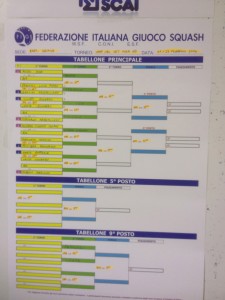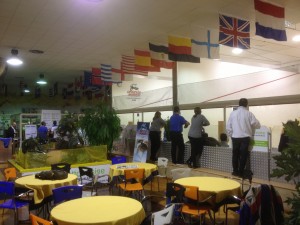Serving in squash is most often thought of as getting just the ball in play. If I win the racquet spin I sometimes (only half jokingly) consider to elect to receive rather than take the serve. So few opponents force me to be defensive with my return that it creates a great attacking opportunity right off the start. But it doesn’t have to be that way. So what should you do with your serve?
Objective of the serve
First of all we need to consider what the goal of the serve is. Simply put, it is to start out the point by giving you, the server, superior position in the court with your opponent in the back corner and you at the T ready to attack. In order to do that, you want to prevent your opponent from taking the ball early, and forcing them, when they do hit the ball, to take it from the back corner where a clean rail or cross court is more difficult. You are trying to force a boast or at best a loose rail or cross-court. Here’s how to do it:
3 Keys to a good serve
1) Make your serve a “line drive” that does not at any point go above the side “out” line. Make contact with the ball at about head height and hit it at a medium to medium hard pace.
2) Aim to have the ball hit the side wall at exactly the spot where your opponent would want to volley the ball. Watch where your opponent stands to receive the ball, and notice their body language. Almost all players give signals as to where they are looking to take the ball.
3) Ensure that the ball does not hit the back wall off the fly. The ideal first bounce is about a foot from the back wall. Manage the depth of the serve with a combination of ideal height and speed.
Backhand serves
I am often asked whether to hit “forehand” side serves with the backhand. The answer is yes. There are three good reasons:
1) You can see your opponent while serving, allowing you to adjust the spot on the side wall based on your opponent’s body language or actual movement.
2) The angle of the serve is smaller meaning that it stays close to the side wall for a longer period of time making it harder to volley.
3) You are a step closer to the T, so you will be ready faster for your opponent’s return.
Additionally, for newer players it gives additional practice hitting backhand volleys, often the hardest shot for new players to learn.
Lob Serves
Should you hit a lob serve? I should mention that there are some players who are very proud of their lob serve. I love playing players who love their lob serve. I have never played one of these players whose serve did not give out at crucial moments. And returning a lob serve, even a good one, is not that hard if done correctly (a future post!). In my mind a lob serve is just not worth the risk of outright losing the point with an “out” serve.
Tips for beginners
For those beginners having a tough time simply making contact or getting the ball to go “in”, focus on the toss. Most beginners make the mistake of not tossing the ball far out enough. Try to toss the ball into the path of the racquet face as it swings through. For forehand serves from the forehand side of the court, toss the ball about 1 foot in front of your front foot. For forehand serves from the backhand side of the court, toss the ball straight out from the middle of your body. This will allow the natural angle of the swing create the correct angle for the serve.


